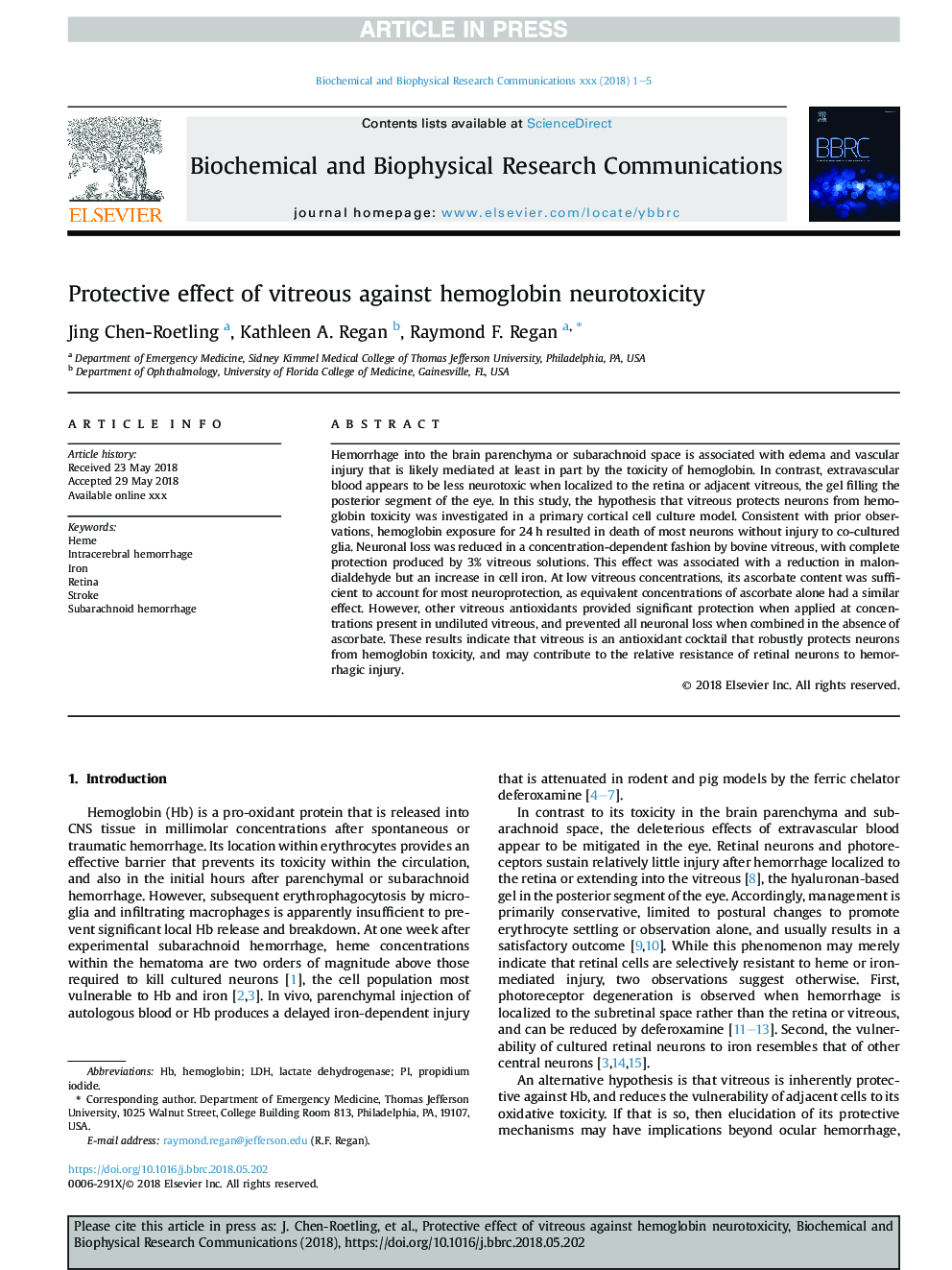| کد مقاله | کد نشریه | سال انتشار | مقاله انگلیسی | نسخه تمام متن |
|---|---|---|---|---|
| 8292299 | 1536727 | 2018 | 5 صفحه PDF | دانلود رایگان |
عنوان انگلیسی مقاله ISI
Protective effect of vitreous against hemoglobin neurotoxicity
ترجمه فارسی عنوان
اثر محافظتی شیشه ای بر عصبی عضلانی هموگلوبین
دانلود مقاله + سفارش ترجمه
دانلود مقاله ISI انگلیسی
رایگان برای ایرانیان
کلمات کلیدی
موضوعات مرتبط
علوم زیستی و بیوفناوری
بیوشیمی، ژنتیک و زیست شناسی مولکولی
زیست شیمی
چکیده انگلیسی
Hemorrhage into the brain parenchyma or subarachnoid space is associated with edema and vascular injury that is likely mediated at least in part by the toxicity of hemoglobin. In contrast, extravascular blood appears to be less neurotoxic when localized to the retina or adjacent vitreous, the gel filling the posterior segment of the eye. In this study, the hypothesis that vitreous protects neurons from hemoglobin toxicity was investigated in a primary cortical cell culture model. Consistent with prior observations, hemoglobin exposure for 24â¯h resulted in death of most neurons without injury to co-cultured glia. Neuronal loss was reduced in a concentration-dependent fashion by bovine vitreous, with complete protection produced by 3% vitreous solutions. This effect was associated with a reduction in malondialdehyde but an increase in cell iron. At low vitreous concentrations, its ascorbate content was sufficient to account for most neuroprotection, as equivalent concentrations of ascorbate alone had a similar effect. However, other vitreous antioxidants provided significant protection when applied at concentrations present in undiluted vitreous, and prevented all neuronal loss when combined in the absence of ascorbate. These results indicate that vitreous is an antioxidant cocktail that robustly protects neurons from hemoglobin toxicity, and may contribute to the relative resistance of retinal neurons to hemorrhagic injury.
ناشر
Database: Elsevier - ScienceDirect (ساینس دایرکت)
Journal: Biochemical and Biophysical Research Communications - Volume 503, Issue 1, 3 September 2018, Pages 152-156
Journal: Biochemical and Biophysical Research Communications - Volume 503, Issue 1, 3 September 2018, Pages 152-156
نویسندگان
Jing Chen-Roetling, Kathleen A. Regan, Raymond F. Regan,
